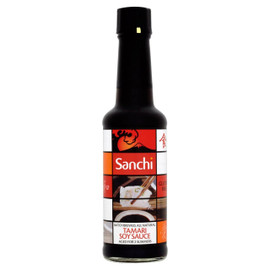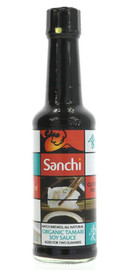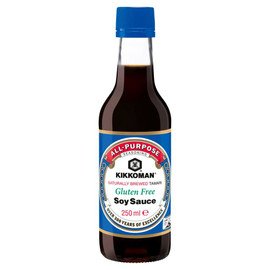UNLEASH THE UMAMI FLAVOUR!
Kikkoman Soy Sauce adds that certain something to every dish, both during cooking and on the plate. With its full-bodied aroma, it is equally at home in Asian food as in cuisines the world over. The magical touch of Kikkoman Soy Sauce enhances everyday dishes from a hearty Bolognese or a juicy burger. It even gives an extra "Kikk" to salad dressings, creamy dips or sweet desserts without overpowering.
It takes just 4 pure ingredients - water, soybeans, wheat, and salt - to craft our soy sauce following a 300-year-old recipe. No additives, colourings, preservatives or flavour enhancers are used, and all our ingredients are GMO-free. We also give our soy sauce several months to mature so it can develop its especially high levels of umami, inimitable aroma and clarity of colour. This is the only way to achieve the distinctive, intense and savoury flavour that's unique to Kikkoman. You can truly taste the difference.
Is soy sauce only suitable for oriental dishes?
Although soy sauce is widely used in oriental dishes, the aromatic flavour of Kikkoman makes it the perfect seasoning for sauces, soups, salad dressings and many other western foods.
What is the difference between light and dark soy sauce?
Chinese soy sauces are available in both light and dark versions. Some are chemically produced and others are partially brewed. Dark soy sauces may contain caramel colouring (E150) and light Chinese soy sauces are often very salty. Kikkoman produces just one soy sauce in Europe because it is suitable for all dishes, even recipes that specify light or dark sauces. The clarity of Kikkoman means it will not discolour clear broths or stocks, and its aromatic qualities work to enhance rather than overpower delicate flavours.
What is the difference between Chinese and Japanese soy sauce?
Most Chinese soy sauce is produced using a much shorter brewing process using little or no wheat and no yeast, as well as having a higher salt content than the Japanese type. Also some Chinese brands are a mixture between a brewed soy sauce and a chemical one.
Ingredients
Water, Soybeans, Wheat, Salt
Allergens in bold
Directions
The amount of soy sauce you use at the table depends on the dish. A dash or two of soy sauce will always add body to the flavour. Our dispenser is perfect for table-top seasoning. Below are some helpful tips
Seasoning your salad: use one dessert spoon of soy sauce for every dessert spoon of oil. You won't need any salt or vinegar, but you can add other seasonings e.g. lemon juice or fresh herbs to adjust the flavour.
While cooking: simply add a few splashes of soy sauce and then adjust the flavour to taste.
For glazing: simply brush on a mixture of soy sauce and honey when it's almost cooked and pop it back in the oven for a few minutes.
Marinating: When you're making your own marinade, use around 3 to 4 tablespoons of soy sauce for each portion (approx. 120 to 150g), plus the other ingredients and seasonings. Just remember that the ratio of soy sauce to other liquid ingredients should be around 2:1.
Store in a cool, dry place and store in the fridge after opening.











